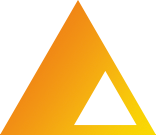CAAKE Winter Residency – November reflections PART 2 JANE TALBOT


The Fourth Space
As a writer and performance storyteller, I’m used to collaborating. I’ve worked with actors, theatre-makers, composers and illustrators. I can safely say I’m comfortable in that particular collaborative space. Working with a dancer and a installation artist. Well, that’s me boldly going where I’ve never gone before – and I wasn’t quite sure what to expect!
Working with Marketa Formanova (dancer and arts educator) and Gail Mahon (installation artist and arts educator) as part of CAAKE’s Dissonance of Surface project – during their winter FL*OOOW residency- has had me diving deep into new creative spaces in my own body, into new spaces between me and others, and into new spaces between me and so-called inanimate objects.
If you were to walk into my office and catch me writing, you’d be forgiven for thinking I’d left a stunt double at my desk but that no one was actually ‘home’. You’d be more or less right because, when I’m writing, my consciousness is off working in two separate spaces.
The first space is deep in my body. In this space I’m fishing for emotions and hooking them up with the right words. In this space, I’m fishing for fragments of story. The second space is somewhere between this first space and ‘reality’. It’s the space where I create the world in which my stories take place.
If you were to watch me performing, you’d be observing me connected to three spaces at once: to the first space (where the story comes from); to the second space (the world in which the story is told); and to the third space – that’s the space which connects me as a teller to you, the audience. The third space is the conduit that facilitates the flow of the story from me to you. And it’s also the space that lets me know how alive you are to the story: that space lets me feel how you’re responding, and your response nourishes the story in unique ways. This means that whenever I perform a story, it’s always different because the third space is always nourished in different ways.
Collaborating with Gail and Marketa catapulted me into a fourth space – a space I hardly know: the space between me and objects – me and ‘things’, me and surfaces, me and shapes, me and the differing textures of my own response to the ‘thingness’ of objects.
And you know what? This shouldn’t really be an alien world to me. As a performer, I work with objects all the time, but I can make a new distinction now: I wasn’t actually working with objects. In fact, I’d hardly taken the time at all to really discover what the objects could do for my performance – or even what ideas they had of their own!
As a storyteller, I’d made objects a slave to my performance. They were props, taking a secondary role, doing only what they were instructed to do. I was in charge. For all I know now, they probably have some magic powers that I’ve completely ignored. I’ve only puppeted the props – quite literally. I’ve limited the power of their potential to be part of the performance by failing to take the time to really understand their ‘objectness’ and how my moving with them (rather than controlling them) might animate the performance in new ways.
Gail and Marketa had invited Echo Echo’s Body Wisdom group to work with them on the day I visited the project. During the day-long workshop we explored, and moved with, various objects: small disks, sticks of varying lengths and rope. And the more we worked with these objects, the more I realised how alive these things actually were – and how they affected the dynamic of the interaction between the human movers in the space. And the more we worked with these objects, the more evident it became that when we projected a narrative onto the ‘action’, that’s exactly the point at which we moved out of the sweet spot. When we dictated the role the objects played, the aliveness of the performance was lost. Yet, when we were fully present to the objects and how they connected us; when we listened to them and felt their intention? Well, that’s when things started to flow. That’s when things got interesting to watch as an audience member. That’s when the objects started to dance and move – as if they had lives of their own.
I think I’m going to re-visit my prop box this week. (I think I’m going to stop calling it that for a start.) I think I’m going to leave the lid off it – and let those objects breathe and have a bit of space. And then I’m going to spend time with those objects. I’m going to play with them. I’m going to listen to them. I’m going to let them have their say. And I’m going to welcome what the fourth space brings.
Jane Talbot is an author, theatre-maker, performance storyteller and trainer of both NLP and hypnosis. You can find out more about her work here www.janetalbotwriter.com and here www.janetalbot.com
